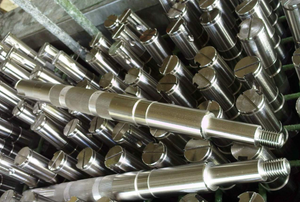
Inspection and testing standards for electroplated products Inspection and certification services for factories and products
As a crucial step in the manufacturing of electronic components, the quality of electroplated terminals directly affects the reliability and service life of the products. To ensure that the electroplated terminals meet industry standards and quality certification requirements, establishing a professional inspection process is of utmost importance. This article will systematically introduce the inspection standards, testing methods, and certification requirements for electroplated terminals, providing a complete quality control guideline for enterprises.
I. Film Thickness Inspection Certification System
1.1 Professional Certification of Inspection Equipment
Standardized inspection certification is carried out using a fluorescence film thickness meter (X-RAY)
Establish a professional certification system for equipment calibration and maintenance
Implement a periodic equipment accuracy verification system
1.2 Standardization Certification of Testing Process
Daily Certification: Standardization of Startup Spectral Calibration
Monthly Certification: Standardization of Crossline Calibration
Weekly Certification: Programmed Calibration of Gold and Nickel
Material compatibility certification: Select the corresponding test file based on the type of steel.
1.3 Testing File Management Certification
Establish a standardized process for testing file management of new products
Standardization certification of archive codes (e.g. Au-Ni-Cu series)
Accurate record and certification of material composition
II. Adhesion Test Certification Standards
2.1 Professional Certification for Testing Methods
Bending method certification:
Use standard thickness copper sheet pads
Standardized operation for 180-degree bending
Microscopic observation standardization
Tape method certification:
Standardization selection of 3M tape
90-degree vertical tearing standardization
10x magnification microscope observation standardization
2.2 Result determination certification criteria
Certification for the absence of metal powder falling phenomenon
Certificate of no coating peeling phenomenon
No cracking or peeling phenomenon certification
No foam phenomenon certification
No exposure of lower layer metal phenomenon certification
2.3 Poor Analysis Professional Certification
Certification for Accurate Determination of Flaking Layer Location
Standardization of coating thickness analysis
Procedural workstation traceability systematization
III. Weldability Inspection Certification System
3.1 Basic Welding Performance Certification
Standardized certification for direct tin plating method:
Standardization of soldering agent application
Standardization of tin furnace temperature at 235℃
25mm/s precise control of extraction speed
10x magnification microscope inspection standardization
3.2 Durability Performance Certification
Professional certification for steam aging test:
8 - 16-hour aging standardization
Simulation of harsh environments to achieve realism
Verification of welding performance and durability
3.3 Acceptance Criteria - Professional Certification
The area of tin consumption should be ≥ 95% standardized.
Surface smoothness and glossiness certification
Non-rejection and non-detachment welding inspection
Defect-free pinhole certification
IV. Appearance Quality Inspection Certification
4.1 Standardization Certification for Inspection Conditions
Observation with a magnifying glass of 10 times or more is standardized
Standard white light source is vertically irradiated for standardization.
Environmental Certification for Specialized Inspection Services
4.2 Appearance Certification Standards
Uniformity of Color Intensity Professional Certification
Pollutant-free adhesion certification
Standardization test for dryness
Professional assessment of surface smoothness
No mechanical damage certification
No exposure of the underlying layer certification
4.3 Special Standards Management Certification
Certification of Compliance with Drawing Requirements
Standardization of the QE Engineer's Decision-making Process
Standardization of Limit Sample Management
Standardization of appearance assistance system
V. Packaging, Transportation, Inspection and Certification
5.1 Packaging Quality Certification
Standardized verification of packaging orientation correctness
Certification of cleanliness of packaging containers
Professional assessment of packaging integrity
5.2 Label Management Certification
Label Information Integrity Certification
Verification of Label Filling Accuracy
Confirmation of consistency in the number of inner and outer labels
VI. Special Environment Testing and Certification
6.1 Porosity Test Certification
Gold coating: Standardized by nitric acid vapor method
Palladium-nickel plated products: Standardization of gel electrolysis method
Test condition precise control certification
6.2 Salt Spray Test Certification
Standardized Control of Test Environment
Standardized management of test duration
Result determination - Professional certification
VII. Inspection and Certification Process Standards
7.1 Sampling Inspection Plan
Implement statistical sampling certification in accordance with the AQL standard
The key performance items implement a full inspection certification system.
Establish a complete quality traceability management system
7.2 Equipment Certification for Testing
Regular calibration certification of testing instruments
Verification of environmental standardization control
Precise management of test conditions
7.3 Defect Level Determination
Critical Defect: Any item that affects functionality is strictly prohibited.
Serious defect: Major performance issue - strictly controlled
Minor defect: The appearance flaws fall within the acceptable range as per the standards.
VIII. Key Control Matters for Factory Inspection Certification
To ensure that the quality of the electroplated terminals continues to meet the certification requirements, during the factory inspection process, the following matters need to be given special attention:
Electroplating process control certification: Establish an electroplating parameter monitoring system
Pharmaceutical solution management certification: Regular quality inspection of electroplating solutions
Equipment maintenance certification: Verification of regular maintenance of electroplating equipment
Environmental Management Certification: Control of Workshop Temperature and Humidity
Personnel qualification certification: Operators undergo professional training and obtain certificates.
Inspection Certification Summary
The inspection and certification of electroplated terminal products is a highly technical and systematic project that requires comprehensive testing and certification from aspects such as film thickness accuracy, adhesion strength, and solderability. By establishing a professional inspection process and strict quality standards, enterprises can ensure that electroplated terminal products meet industry certification requirements, providing reliable electroplating solutions for electronic components.
Share this product

Inspection and testing standards for electroplated products Inspection
As a crucial step in the manufacturing of electronic components, the quality of electroplated terminals directly affects the reliability of the products.
